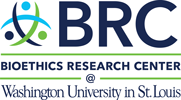Communication Between Families and Medical Team in Pediatric Oncology
GRANT
Conquer Cancer Foundation /
American Society for Clinical Oncology Young Investigator Award
07/2019 – 12/2020
KEY PERSONNEL
- Bryan Sisk, MD, MSCI
Principal Investigator - James M. DuBois, DSc, PhD
Primary Mentor - Jennifer Mack, MD, MPH
Co-Mentor
DESCRIPTION
Communication between families and their medical team serves many important functions in childhood cancer. Yet, many parents experience problems when communicating with their child’s medical team. For example, one of our past studies found that only 27% of parents knew their child’s chance of being cured. In the future, we will need interventions to fix these types of communication problems. But first, we need a deep understanding of how communication works in childhood cancer. Currently, there is not a widespread agreement about the main functions of communication in childhood cancer. Our study aims to define these communication functions.
In adult oncology, researchers found six main functions of communication. These included exchanging information, making decisions, fostering healing relationships, enabling patient self-management, managing uncertainty, and responding to emotions. However, nobody has identified the main communication functions in childhood cancer. Communication in childhood cancer is more complicated because it involves the parent, the child, and the clinician. Because of this complexity, we believe there are unique communication functions in childhood cancer. Previously, we performed a small study of communication experiences in pediatrics to start answering this question. In this initial study, we found early signs of another communication functions in pediatrics, which we call “engendering solidarity and validation.” However, a larger study is needed to identify the functions of communication more fully.
In our current study, we aim to identify the main functions of communication in childhood cancer from the viewpoint of parents, adolescent patients, and clinicians. We will interview 80 parents at three major children’s hospitals to explore their communication experiences. From these interviews, we will identify the main functions of communication. We will also interview 40 adolescents and young adults with cancer at two major children’s hospitals. Lastly, we will identify barriers to communication by performing focus groups with physician and non-physician members of the cancer at two major children’s hospitals. At the end of this study, we will have defined the major functions of communication and we will know what behaviors help or hinder communication. In the future, we will use these definitions to measure whether communication is working well.
PUBLICATIONS
Data collection in progress.

